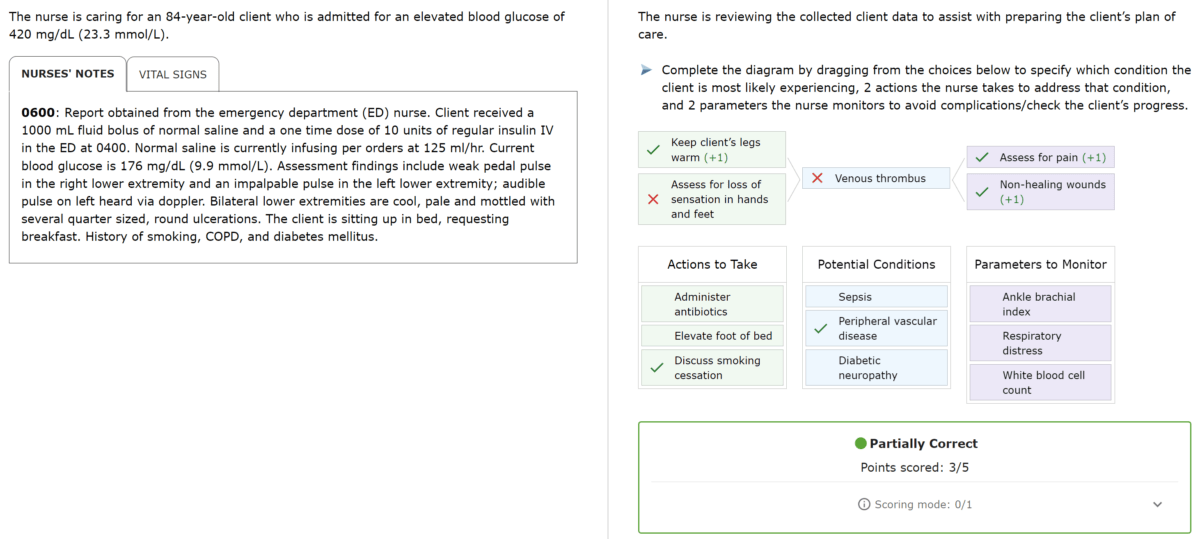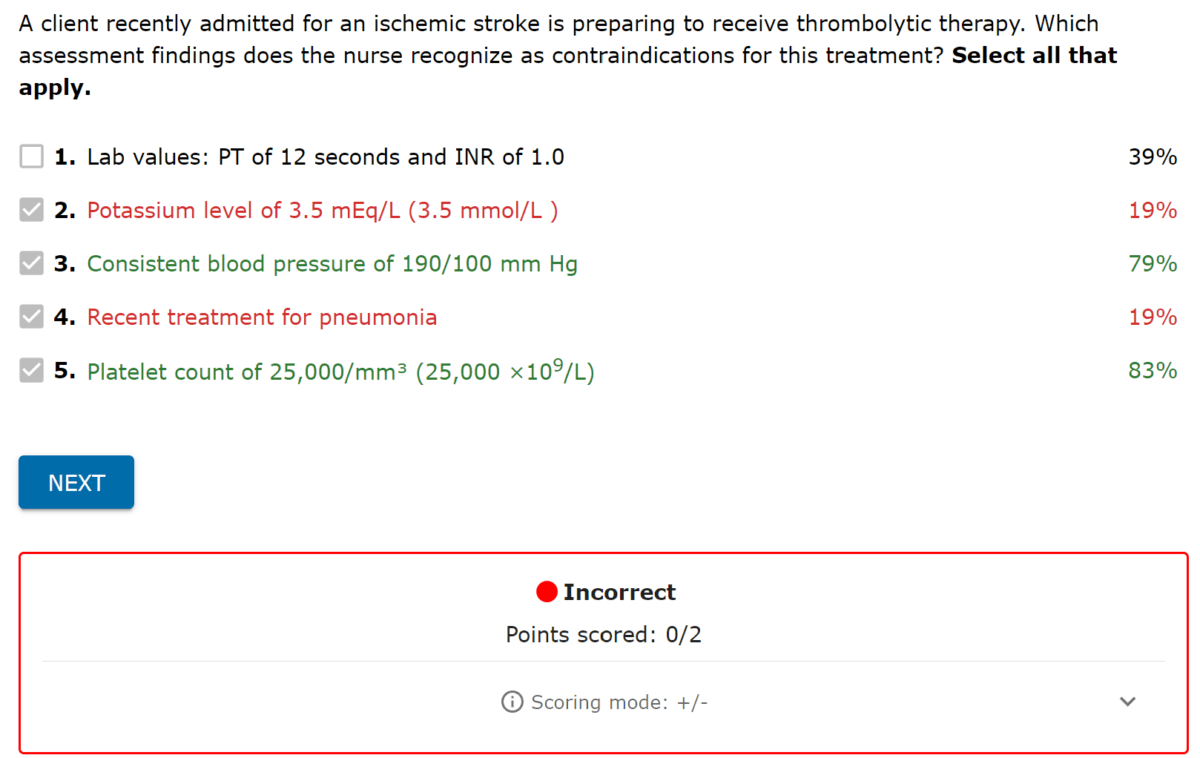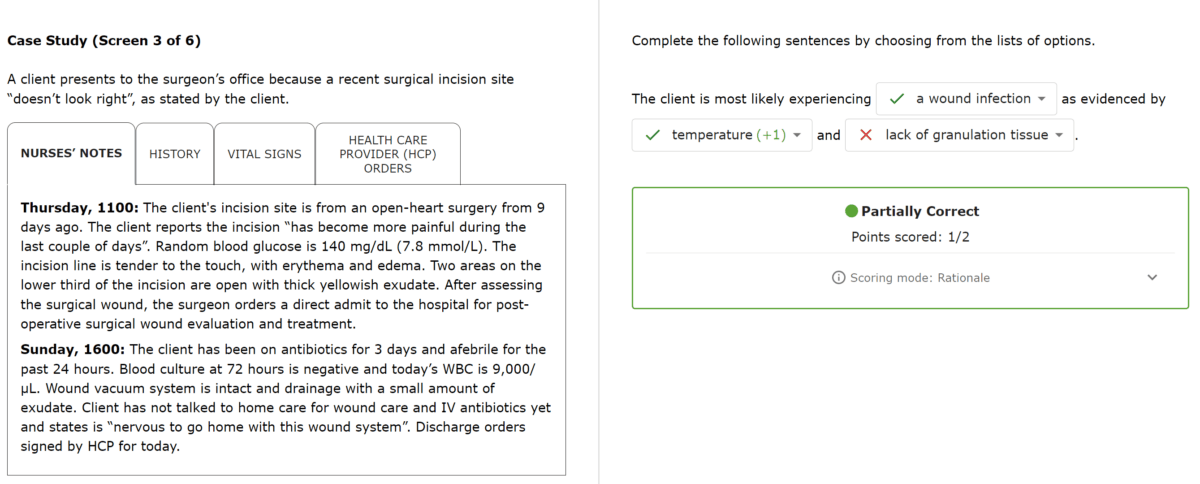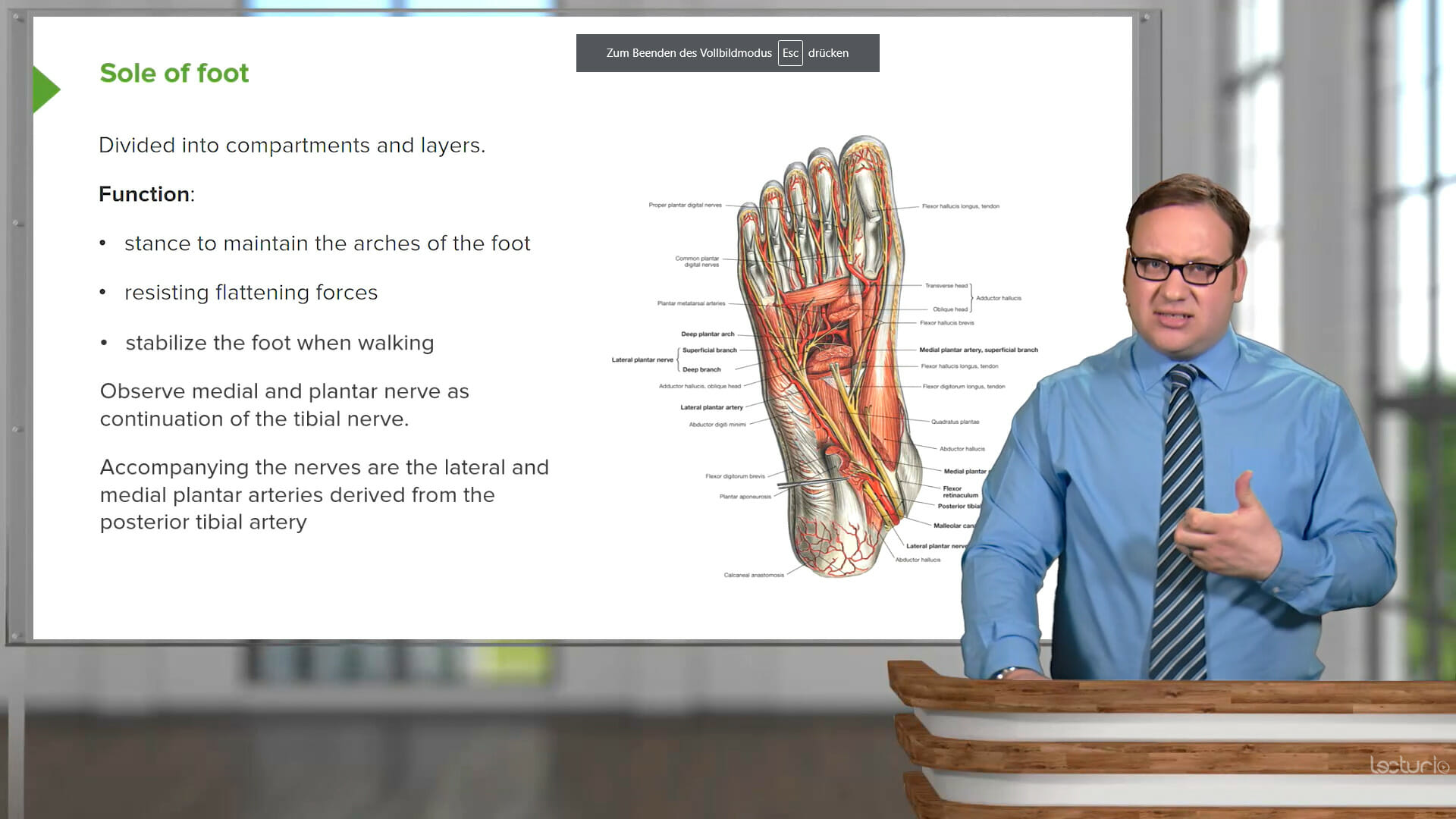Before 2023, you either got a question totally correct or totally incorrect. But now, with partial credit scoring (also known as polytomous scoring), things are different. This means that even if you only get part of a question right, you can still earn some points.
Let’s explore these changes in detail to ensure you maximize your scoring potential on exam day.
Understanding the Three Scoring Rules: 1/0, +/-, and Rationale Scoring
0/1 scoring rule
The 0/1 scoring rule is the classic way of scoring in many tests. It’s used for questions where you have to choose from a limited number of options, like in regular multiple-choice questions.
Under this rule, if you get a question right, you get one point. But if you get it wrong, you don’t get any points. The most points you can get for a question is the number of correct answers it has.
This rule is utilized in question types such as:
- Standard Multiple Choice
- Multiple Response Select N
- Multiple Choice Matrix
- Drop Down Table
- Cloze (Drag&Drop, Dropdown)
- BowTie
These types of questions are usually easy to spot because they’ll ask you to choose a specific number of answers (e.g. “select the 3 most common causes” or because there are only a few options to choose from.
Example: 0/1 scoring for a BowTie item
BowTie questions are a perfect example of an item type where the number of selectable answer options is limited. You can only select five answer options and drag them to the five target areas. Therefore, the 0/1 scoring rule is applied.
This means that for each correct answer you put in the right place, you get one point. But if you put in the wrong answer, you don’t get any points for it.
For example, let’s say there’s a BowTie question that asks you to drag five elements into the correct boxes. You get three of them right, so you earn three points. But the other two elements you put in the wrong places, so you don’t get any points for those. In total, you’d score three out of five possible points.

+/- scoring rule
Unlike the 0/1 scoring, the +/- scoring rule deducts one point for each incorrect response. Correct responses are still rewarded with one point. Note: Even if you select more incorrect answer options than correct ones, your score for a question can’t go below zero.
This rule is used for questions where you can select more than one answer, like when it says “select all that apply.”
Examples of these question types are:
- Multiple-Response Select-All-That-Apply
- Multiple Response Matrix
- Multiple Response Grouping
You can usually tell if a question uses the +/- scoring rule because it will ask you to choose all correct answers, without saying how many correct answers there are.
Example: +/- scoring for a multiple-response select-all-that-apply item
Let’s picture you having answered the question below. In this question, options three and four are the correct answers, but you also picked two wrong answers.
Because you got two of the answers right, you earned two points. But, because you also chose two wrong answers, you lost two points. So, even though you got some answers right and earned points, the wrong answers took away those points. So, in the end, you didn’t get any points for this question.

Rationale scoring
Rationale scoring is about testing your ability to understand cause-and-effect relationships. When you encounter a question with rationale scoring, you’ll earn points for correctly connecting pairs of related answers.
There are two main types of rationale scoring: dyads and triads.
- Dyads require you to correctly identify both elements of a pair to earn a point. If you only get one part right, you won’t receive any points.
- Triads are a bit more complex. They involve two pairs of information, with one element shared between them. You’ll earn points for correctly identifying each pair.
Questions utilizing rationale scoring often include drop-down menus or drag-and-drop elements. They aim to assess your comprehension of causal relationships within clinical contexts.
You can often recognize these questions by keywords such as “due to,” “as evidenced by,” or “because of.” So, be sure to keep an eye out for these indicators!
Example: triad dropdown item with rationale scoring
Let’s break down a dropdown question with triad rationale scoring (see below). You can easily spot it as a triad item with rationale scoring because it includes the phrase “as evidenced by … and …”
Here’s how it works: The first dropdown is linked with both the second dropdown and the third one. If you get both answers right in a pair, you earn one point.
Our example below shows a scenario in which you got the right answer in the first and second dropdown, but not the third one. So, you get one point for the first pair (dropdown one and two), but no points for the second pair (dropdown one and three).
You could have earned two points because there are two pairs, but this time, you only got one point.

Why Understanding Scoring Rules Is Important
The new scoring rules determine how your answers are evaluated and ultimately impact your final score on the NCLEX. Knowing the scoring rules helps you strategize your approach to questions, helping you maximize your scoring potential on exam day. Moreover, being familiar with the various scoring rules can give you more confidence and clarity during your exam prep and make you feel well-equipped to face exam day.

Train with free NCLEX practice questions
Get prepared with a realistic NCLEX Qbank that evaluates your performance with partial scoring like the real exam!


